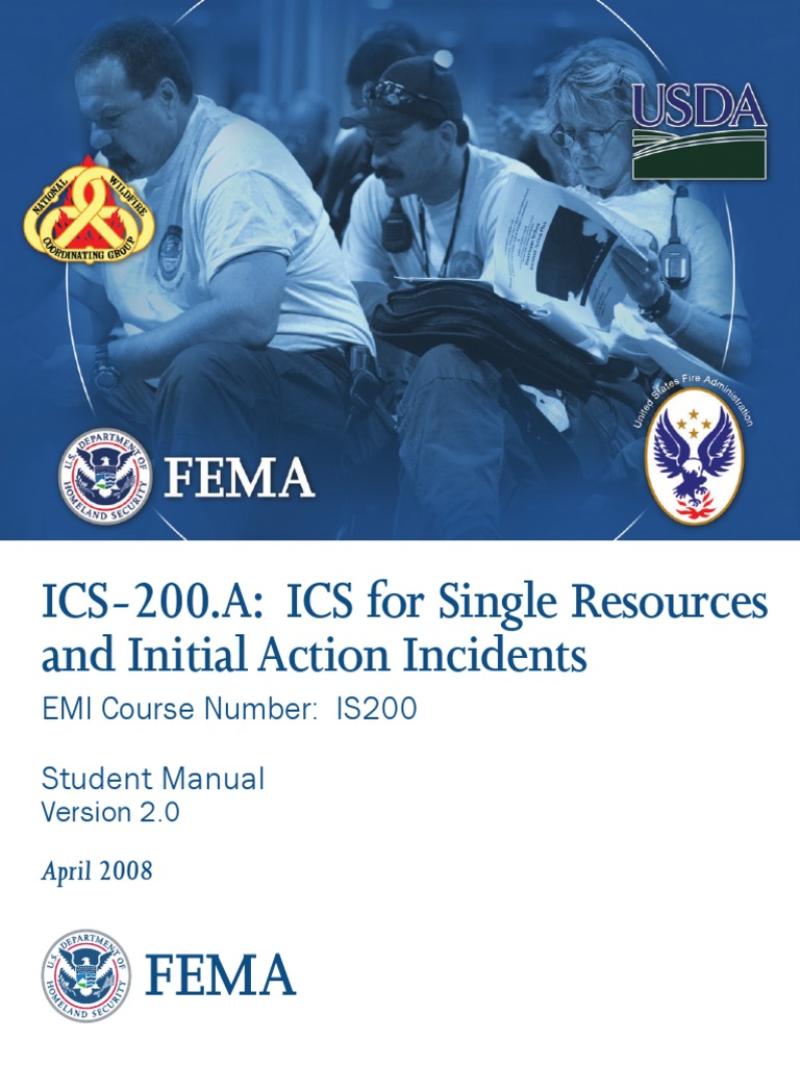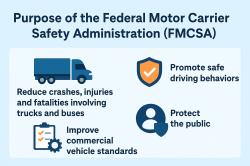What are FEMA ICS?
FEMA ICS stands for the Federal Emergency Management Agency's Incident Command System. It's a standardized management system designed to enable effective and coordinated responses to incidents, emergencies, and disasters, regardless of their size or complexity.
Here are some key insights and functions of FEMA ICS:
Standardized Structure: ICS provides a standardized organizational structure for command, control, and coordination of emergency response. It establishes clear roles, responsibilities, and reporting mechanisms.
Scalability: It's designed to be scalable, meaning it can be used for incidents as small as a local emergency or as large as a multi-state or national disaster.
Unity of Command: ICS emphasizes the principle of a single, unified command structure. This ensures that all responders work under one designated commander, reducing confusion and conflicting directives.
Modularity: I
CS is modular, allowing for flexibility in its application. It consists of manageable functional areas, including command, operations, planning, logistics, and finance/administration. These sections can expand or contract as needed for a particular incident.
Common Terminology: ICS employs a standardized terminology and clear chain of command, ensuring that everyone involved in the response understands the same language and organizational structure.
Integrated Communication: Effective communication is central to ICS. It establishes communication protocols, ensuring that information flows smoothly within the organization and among different responding agencies.
Resource Management: ICS facilitates efficient allocation and utilization of resources by providing a system to inventory, track, and deploy personnel, equipment, and supplies.
Interagency Cooperation: It fosters collaboration and cooperation among multiple agencies, organizations, and jurisdictions involved in the response to ensure a unified effort.
Training and Preparedness: ICS training is crucial for responders at all levels to ensure they understand their roles, the system's structure, and how to effectively use ICS during an incident.
Overall, FEMA ICS serves as a comprehensive framework that enhances coordination, cooperation, and effectiveness in responding to emergencies and disasters, emphasizing a structured yet flexible approach to incident management.
What does FEMA (Federal Emergency Management Agency) ICS (Incident Command System) involve or entail?
FEMA's Incident Command System (ICS) is a standardized approach for managing all types of emergencies, from natural disasters like hurricanes and floods to technological incidents like chemical spills and cyberattacks. It provides a framework for organizing personnel, assigning roles and responsibilities, and coordinating response efforts in a unified and efficient manner.
Here's what FEMA ICS entails:
Core Principles:
- Unified Command: A single, incident commander oversees the overall response, ensuring clear direction and accountability.
- Modular Organization: The system is flexible and can be scaled up or down to fit the size and complexity of the incident.
- Common Terminology: Standardized terms and procedures facilitate clear communication and coordination among different responders.
- Management Functions: Specific functions like planning, operations, logistics, finance, and public information are assigned to dedicated teams.
- Span of Control: The number of people reporting to a single supervisor is limited to ensure effective communication and decision-making.
Key Components:
- Incident Command Post (ICP): The central hub for coordinating all response activities, housing key personnel and communication equipment.
- Organizational Structure: A hierarchical structure with various branches responsible for specific functions like operations, planning, logistics, and finance.
- Standard Operating Procedures (SOPs): Pre-defined protocols for responding to different types of incidents, ensuring consistency and efficiency.
- Communication and Reporting: A robust communication system for sharing information and updates among responders and the public.
Benefits of FEMA ICS:
- Improved coordination: Reduces confusion and duplication of effort, leading to a more effective response.
- Enhanced decision-making: Provides a structured framework for analyzing situations and making informed decisions.
- Increased efficiency: Allocates resources effectively and ensures timely response to critical needs.
- Improved communication: Standardizes terminology and protocols for clear and concise communication among responders.
- Scalability: Adapts to the size and complexity of any incident, from small local emergencies to large-scale disasters.
Training and Resources:
FEMA offers various training courses and resources to equip individuals with the knowledge and skills to apply ICS effectively. These include:
- ICS 100: Introduction to ICS, providing a basic understanding of the system and its core principles.
- ICS 200: ICS for Single Resource and Initial Action Incidents, focusing on implementing ICS in smaller-scale situations.
- ICS 300: Intermediate ICS for Expanding Incidents, delving deeper into the system's application in complex and evolving situations.
Overall, FEMA's ICS is a valuable tool for managing any type of emergency. Its standardized approach, modular structure, and emphasis on clear communication and coordination can significantly improve the effectiveness of disaster response efforts and ensure the safety of communities.
I hope this explanation clarifies what FEMA ICS involves and its benefits. Feel free to ask if you have any further questions about specific aspects of the system or its application in different scenarios.












